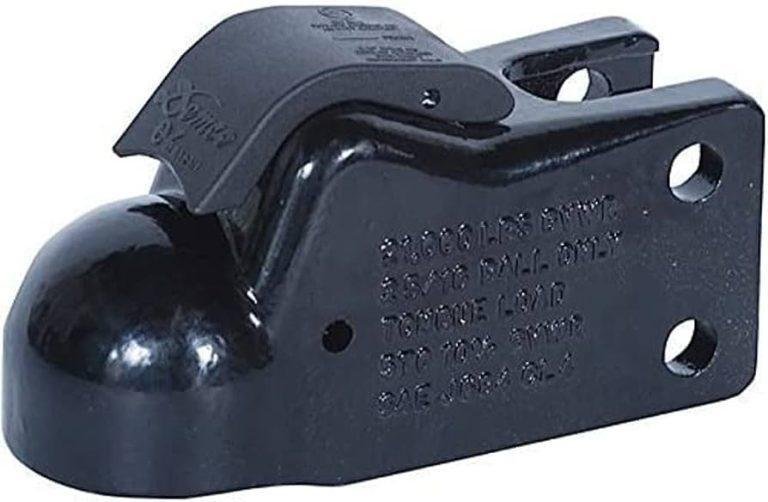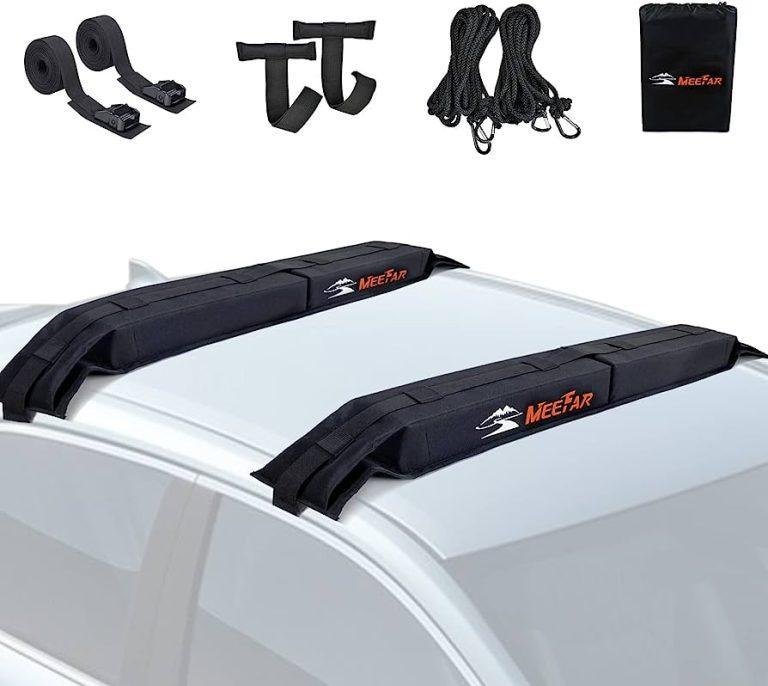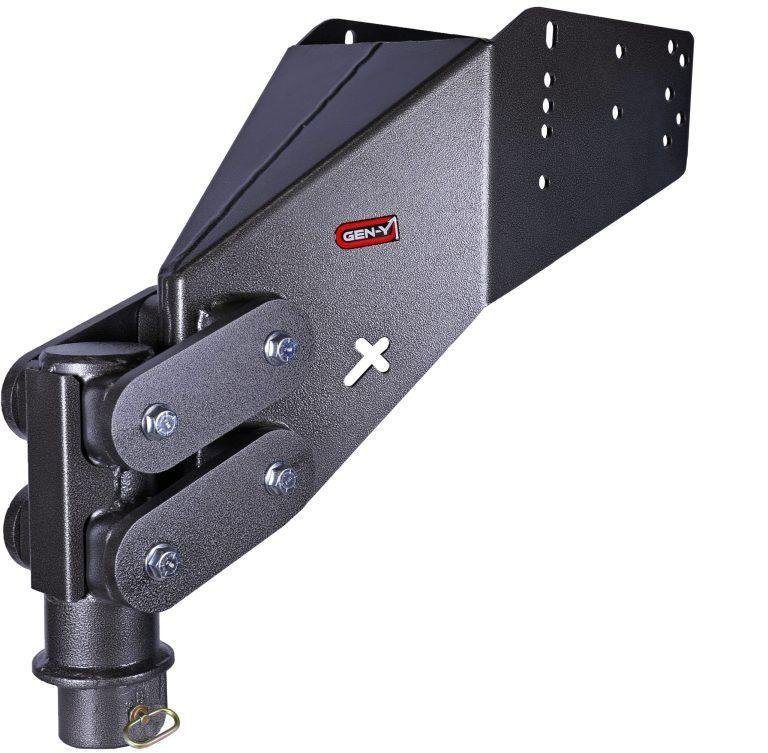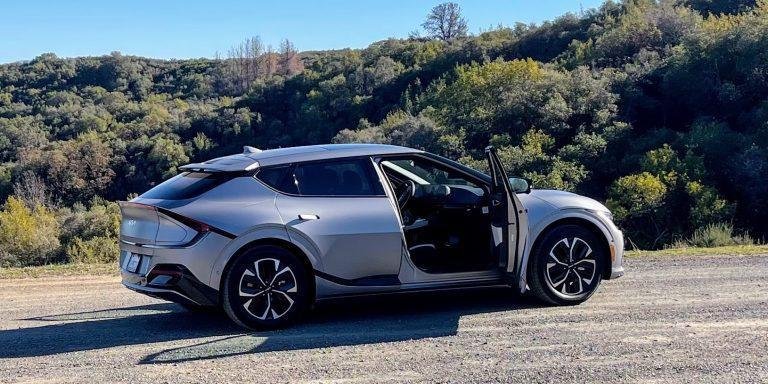To determine the size of tow strap you need, consider the weight of your vehicle or the combined weight of the vehicles you plan to tow. Choose a tow strap with a minimum tow capacity that exceeds this weight.
Tow straps typically come in various lengths, but a 20-foot strap is a versatile option for most towing situations.
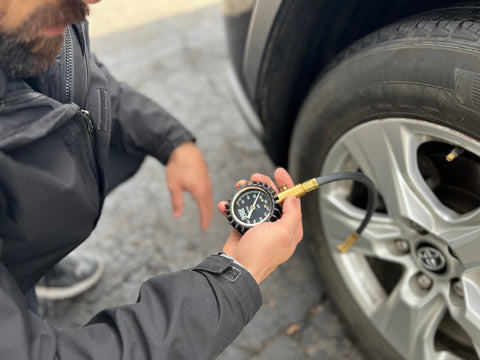
Credit: jacosuperiorproducts.com
Factors To Consider When Choosing A Tow Strap
When choosing a tow strap, it is important to consider the size that you need. Factors such as the weight of the vehicle being towed and the towing capacity of your own vehicle should be taken into account.
Weight and size of the vehicle being towed:
- Determine the weight and size of the vehicle you intend to tow as it plays a crucial role in selecting the right tow strap.
- Consider the gross vehicle weight rating (gvwr) or the curb weight of the vehicle to ensure the tow strap has the appropriate capacity.
- Larger and heavier vehicles may require a tow strap with a higher breaking strength and working load limit to ensure safe towing.
- Keep in mind that towing a smaller vehicle with a larger tow strap may lead to excessive slack and reduced effectiveness.
Breaking strength and working load limit of the tow strap:
- The breaking strength refers to the maximum force the tow strap can handle before it fails.
- Ensure that the tow strap you choose has a breaking strength that exceeds the weight of the vehicles involved in the towing process.
- The working load limit represents the maximum weight that the tow strap can safely handle during regular use.
- Match the working load limit of the tow strap with the weight of the vehicles being towed to prevent potential accidents or damage.
Type of towing and frequency of use:
- Determine the type of towing you plan to undertake, whether it’s for off-road recovery, vehicle transportation, or light-duty use.
- Different towing scenarios may require specific types of tow straps, such as recovery straps for off-road situations or transport straps for regular vehicle towing.
- Consider the frequency of use when choosing a tow strap. Higher frequency may require a more durable and heavy-duty strap to withstand repeated use without compromising safety.
- If you need versatility in your towing endeavors, opt for a tow strap with multiple attachment points and adjustable lengths to accommodate various situations.
Remember, selecting the appropriate tow strap involves considering the weight and size of the vehicle being towed, the breaking strength and working load limit of the strap, and the type of towing and frequency of use. By taking these factors into account, you can ensure a safe and successful towing experience.
Understanding Breaking Strength And Working Load Limit
Understanding breaking strength and working load limit is crucial when determining the appropriate size of a tow strap. By considering these factors, you can ensure the strap is strong enough to handle the weight of the load without risking damage or accidents.
Breaking Strength And Its Importance In Determining The Tow Strap’S Capacity
The breaking strength of a tow strap is a crucial factor to consider when determining its capacity. It refers to the maximum load the strap can withstand before it breaks. Understanding the breaking strength of a tow strap is essential for ensuring safe and effective towing operations.
Here are some key points to help you understand the concept:
- Breaking strength is typically indicated by a numerical value in pounds or tons. This value represents the maximum force the tow strap can handle before it fails.
- It is important to choose a tow strap with a breaking strength that meets or exceeds the weight of the vehicle or object being towed. For example, if you have a 5,000-pound car, it’s recommended to use a tow strap with a breaking strength of 7,500 pounds or higher.
- The breaking strength also takes into account factors such as material quality and manufacturing standards. A higher breaking strength indicates a stronger tow strap that can handle greater loads.
- Using a tow strap with a breaking strength that is too low for the intended towing operation can lead to failures, accidents, and damage to vehicles or objects.
- Always check the manufacturer’s specifications and recommendations for the breaking strength of the tow strap to ensure safe and effective towing operations.
Working Load Limit And How It Relates To The Safe Usage Of The Tow Strap
The working load limit (wll) is another important factor to consider when using a tow strap. It represents the maximum load that the tow strap is designed to handle safely during normal use. Understanding the wll is crucial for ensuring safe and responsible towing practices.
Here are some key points to consider:
- The wll is typically a fraction of the tow strap’s breaking strength and is commonly indicated by a numerical value. For example, if a tow strap has a breaking strength of 10,000 pounds, its wll might be 2,000 pounds, represented as a 2: 1 safety factor.
- The wll takes into account factors such as usage conditions, dynamic forces, and safety factors to determine the maximum weight the tow strap can handle without risking failure.
- It is important to never exceed the working load limit of a tow strap as it can compromise its integrity and lead to accidents or damage.
- Be aware that factors such as temperature, wear and tear, and environmental conditions can affect the working load limit of a tow strap. Regular inspection and maintenance are necessary to ensure safe usage.
- Always refer to the manufacturer’s recommendations and guidelines for the working load limit of the tow strap and never exceed it to maintain safety during towing operations.
Matching Tow Strap Size To Vehicle Weight
Choosing the right tow strap size for your vehicle weight is crucial. The size should be matched to the weight of your vehicle to ensure safe and effective towing without any strain or damage. It is important to consider this factor to avoid any accidents or mishaps during the towing process.
Recommended Tow Strap Size Based On Vehicle Weight Categories
Light-duty vehicles (e. g. , sedans, small suvs):
- For vehicles weighing up to 3,500 pounds: A 1-inch tow strap with a minimum breaking strength of 10,000 pounds is recommended.
- For vehicles weighing between 3,500 and 6,000 pounds: A 2-inch tow strap with a minimum breaking strength of 20,000 pounds is recommended.
Medium-duty vehicles (e. g. , mid-sized suvs, pickup trucks):
- For vehicles weighing between 6,000 and 10,000 pounds: A 3-inch tow strap with a minimum breaking strength of 30,000 pounds is recommended.
Heavy-duty vehicles (e. g. , full-sized suvs, trucks):
- For vehicles weighing over 10,000 pounds: A 4-inch tow strap with a minimum breaking strength of 40,000 pounds is recommended.
Choosing the right size tow strap for your vehicle is crucial. Using an undersized tow strap may compromise its strength and increase the risk of accidents. On the other hand, an oversized tow strap can add unnecessary weight and bulkiness.
To ensure safe towing, it’s important to match the tow strap size to your vehicle’s weight category.
Light-Duty Vehicles (E.G., Sedans, Small Suvs):
- A 1-inch tow strap with a minimum breaking strength of 10,000 pounds is suitable for vehicles weighing up to 3,500 pounds. This size provides enough strength for light-duty vehicles without unnecessary bulkiness.
- For vehicles weighing between 3,500 and 6,000 pounds, a 2-inch tow strap with a minimum breaking strength of 20,000 pounds is recommended. This size offers increased strength to handle the additional weight while still maintaining a manageable size.
Medium-Duty Vehicles (E.G., Mid-Sized Suvs, Pickup Trucks):
- Vehicles weighing between 6,000 and 10,000 pounds require a 3-inch tow strap with a minimum breaking strength of 30,000 pounds. This size ensures enough strength to safely tow medium-duty vehicles without compromising durability.
Heavy-Duty Vehicles (E.G., Full-Sized Suvs, Trucks):
- For vehicles weighing over 10,000 pounds, a 4-inch tow strap with a minimum breaking strength of 40,000 pounds is recommended. This size provides the necessary strength to handle the heavy load of heavy-duty vehicles, ensuring safe and secure towing.
Remember, these recommendations are based on general weight categories, and individual vehicles may vary. It’s always a good idea to consult your vehicle’s manual or contact the manufacturer for specific towing recommendations. By selecting the appropriate size tow strap for your vehicle’s weight category, you can ensure safe and reliable towing whenever the need arises.
Common Mistakes To Avoid When Choosing A Tow Strap
Choosing the right tow strap size is crucial to ensure effective towing. Avoid common mistakes by considering the weight of the vehicles, the towing capacity of the strap, and the length needed for safe towing.
When it comes to choosing a tow strap, it is important to avoid certain common mistakes that could lead to dangerous situations or damage to vehicles. By being aware of these pitfalls, you can ensure that you select the right tow strap for your needs and use it safely and effectively.
Using A Tow Strap That Is Too Small Or Weak For The Vehicle Being Towed:
Using an undersized or weak tow strap can be a major mistake, as it may not have the necessary strength to handle the weight and force exerted during towing. This can lead to the strap snapping or breaking, putting both vehicles and individuals at risk.
To avoid this mistake:
- Assess the weight and size of the vehicles involved in the towing process.
- Understand the recommended strength and load capacity of tow straps.
- Choose a tow strap that exceeds the weight and capacity of the vehicle being towed.
- Consider factors such as vehicle weight, weather conditions, and terrain when selecting a tow strap.
Overestimating The Strength Of A Tow Strap And Risking Damage To The Vehicles Involved:
On the other hand, overestimating the strength of a tow strap can also lead to problems. Assuming that a tow strap can handle more weight than it actually can may result in vehicle damage, including bending frames or breaking parts.
To avoid this mistake:
- Read and understand the specifications and limitations of the tow strap.
- Never assume that a tow strap can handle more than its stated capacity.
- Take into account the weight distribution and conditions during the towing process.
- Use additional equipment like recovery straps or chains if necessary for heavier loads.
Ignoring The Importance Of Proper Maintenance And Inspection Of The Tow Strap:
Proper maintenance and inspection of a tow strap are essential to ensure its safety and effectiveness. Failing to regularly check the condition of a tow strap can result in unexpected failure or damage during use. To avoid this mistake:
- Inspect the tow strap regularly for signs of wear, fraying, or damage.
- Check the stitching and attachments for any signs of weakness or loosening.
- Clean and store the tow strap properly to prevent deterioration and contamination.
- Replace the tow strap if it shows any signs of damage or if it has been involved in a heavy load or stressful situation.
By avoiding these common mistakes, you can ensure that you choose and use the right tow strap for your needs, reducing the risk of accidents, damage to vehicles, and personal injury. Remember to always prioritize safety and properly maintain your tow strap to extend its lifespan and effectiveness.
Different Types Of Tow Straps And Their Recommended Uses
Tow straps come in various sizes to meet different towing needs. It is important to consider the weight of the vehicle being towed when choosing the right size. A larger tow strap should be used for heavier vehicles, while a smaller one is sufficient for lighter loads.
Nylon tow straps and their benefits for towing lighter vehicles:
- Nylon tow straps are highly versatile and widely used for lighter vehicles.
- They are lightweight, making them easy to handle and store.
- Nylon is less abrasive than other materials, reducing the risk of damage to the vehicle being towed.
- These tow straps have a high strength-to-weight ratio, providing reliable towing capability.
- Nylon tow straps offer excellent resistance to uv rays, moisture, and mildew, ensuring durability and longevity.
- They are suitable for a variety of towing situations, including vehicles with a lower weight capacity.
Polyester tow straps and their advantages for heavier loads and frequent use:
- Polyester tow straps are particularly suitable for heavier loads and frequent towing needs.
- They are stronger and more durable than nylon tow straps, making them ideal for heavy-duty applications.
- Polyester is resistant to stretching and provides superior load-bearing capacity, ensuring safe and secure towing.
- These tow straps are capable of withstanding higher working loads and offering longer service life.
- Polyester tow straps have excellent resistance to abrasion, uv rays, and chemicals, providing reliable performance even in harsh conditions.
- They are a popular choice for professional towing services and applications that involve regular and heavy use.
Synthetic rope tow straps and their suitability for off-road recovery:
- Synthetic rope tow straps are specifically designed for off-road recovery and challenging towing situations.
- They are lightweight yet incredibly strong, offering an excellent strength-to-weight ratio.
- Synthetic ropes are highly flexible, allowing them to wrap around uneven surfaces and objects more easily.
- These tow straps are less likely to cause injury if they snap under tension, making them a safer option for recovery operations.
- Synthetic rope tow straps have excellent resistance to uv rays, chemicals, and moisture, ensuring durability in rugged environments.
- They are popular among off-road enthusiasts, explorers, and recovery professionals due to their superior performance and versatility.
Remember, selecting the right tow strap is crucial to ensure safe and efficient towing. Consider the weight of the vehicle being towed, the expected usage frequency, and the specific towing conditions when choosing between nylon, polyester, and synthetic rope tow straps.
Safety Tips For Using A Tow Strap
Knowing the correct size of tow strap is crucial for safe towing. Consider factors such as the weight of the vehicle being towed and the maximum load capacity of the strap to ensure a secure and efficient towing experience.
Ensuring Proper Attachment Points And Secure Connections:
- When using a tow strap, it is essential to ensure that you have proper attachment points on both vehicles. These attachment points should be structurally sound and capable of withstanding the towing load.
- Before connecting the tow strap, inspect it to make sure it is in good condition without any fraying or damage.
- Attach one end of the tow strap to the recovery point on the towing vehicle. This could be a designated tow hook or a secure metal frame component.
- The other end of the tow strap should be attached to the towed vehicle’s recovery point in the same manner. It is important to avoid attaching the tow strap to any parts that could be easily damaged, such as bumpers or weak structural components.
- Ensure that the connections are secure and tight before starting the towing process.
Maintaining A Safe Distance And Speed While Towing:
- Follow safe driving practices when towing with a tow strap. Maintain a safe distance from the towed vehicle and the vehicle in front of you.
- Avoid sudden acceleration or braking, as this can lead to instability and potential accidents.
- Keep your speed within a safe range, usually lower than the speed limit, taking into account the weight and condition of the towed vehicle. Remember that towing adds extra weight and affects braking capabilities.
- Be aware of any specific speed recommendations or restrictions provided by the manufacturer of the tow strap or the vehicles involved.
Monitoring The Tow Strap For Signs Of Wear Or Damage:
- Regularly inspect the tow strap during and after each use to ensure that it remains in good condition.
- Look out for any signs of wear, such as frayed edges, broken fibers, or visible damage. If any of these defects are present, the tow strap should be replaced immediately.
- Check for any knots or twists in the tow strap before using it, as these can weaken its strength and lead to a potential failure.
- After each use, clean and store the tow strap properly to prevent unnecessary wear and tear.
Remember, using a tow strap comes with certain responsibilities. By ensuring proper attachment points and connections, maintaining a safe distance and speed, and monitoring the tow strap for signs of wear or damage, you can safely and effectively tow vehicles when needed.
Stay vigilant and prioritize safety at all times.
Frequently Asked Questions On How Big Of A Tow Strap Do I Need?
What Length Tow Strap Do I Need?
To determine the length of tow strap you need, consider the weight and size of your vehicle. A general rule is to choose a strap that is at least 2 times the gross vehicle weight rating (gvwr) of your vehicle.
For example, if your vehicle has a gvwr of 5,000 pounds, you should opt for a tow strap with a minimum breaking strength of 10,000 pounds. This ensures the strap can handle the weight and stress of the tow. Remember, it is better to have a longer tow strap than one that falls short.
This allows for flexibility and safer towing. However, excessively long straps can become tangled, so it’s essential to strike a balance. Always check the manufacturer’s recommendations and adhere to any local regulations regarding tow strap length. It’s crucial to select the right length to guarantee a secure and successful towing experience.
How Do I Select The Right Size Recovery Strap To Use For My Vehicle?
To choose the right size recovery strap for your vehicle, consider the weight and size of your vehicle. Determine the gross vehicle weight rating (gvwr) of your vehicle using the manufacturer’s specifications. Select a recovery strap with a minimum working load limit (wll) that matches or exceeds the gvwr.
This ensures that the strap can handle the vehicle’s weight during recovery. Additionally, check the breaking strength of the recovery strap. It should be at least three times the gvwr to provide a safety margin. For example, if the gvwr of your vehicle is 5,000 pounds, the recovery strap should have a breaking strength of at least 15,000 pounds.
Remember to inspect your recovery strap regularly for any signs of wear or damage. Replace it if necessary to maintain safety during recoveries. Following these guidelines will help you choose the right size recovery strap for your vehicle and ensure a successful recovery operation.
How Strong Should A Tow Strap Be?
A tow strap should be strong enough to handle the weight of the vehicle being towed. It is recommended to use a tow strap with a minimum breaking strength of 2-3 times the vehicle’s weight. A stronger tow strap ensures it can withstand the forces exerted during towing and prevents accidents and damage.
Always check the rating and specifications provided by the manufacturer to ensure it’s suitable for your specific towing needs. Additionally, regular inspections should be conducted to check for any signs of wear or damage. If any signs of wear or weakness are detected, the tow strap should be replaced immediately to ensure safe towing operations.
Remember, using a tow strap that is not strong enough can lead to dangerous situations and potential damage to your vehicle.
What Is The Difference Between A Recovery Strap And A Tow Strap?
A recovery strap is designed to stretch and absorb shock, making it suitable for pulling vehicles out of tough situations. On the other hand, a tow strap is not elastic but has a high tensile strength, making it ideal for flat towing or towing disabled vehicles long distances.
The recovery strap is typically used for off-road recoveries or situations where there is already traction. Meanwhile, the tow strap is used for towing vehicles on roads or flat surfaces. Both straps have hooks or loops on either end for easy attachment, but it’s important to follow the manufacturer’s instructions for proper use and safety precautions to avoid damage or injury.
Remember, use a recovery strap for recovery purposes and a tow strap for flat towing or long-distance towing.
Conclusion
Choosing the right size tow strap is crucial for a safe and effective towing experience. By carefully considering the weight of the vehicles you plan to tow and the potential strain on the strap, you can ensure you have the appropriate strength and length.
The size of the tow strap should match or exceed the weight of the heaviest vehicle involved. It’s important to remember that using a tow strap that is too weak or short can result in accidents, damage to vehicles, and even injury.
Before purchasing a tow strap, take the time to research the weight specifications of your vehicles and select a strap that meets those requirements. Additionally, regularly inspecting and maintaining your tow strap is important to ensure its durability and effectiveness.
By following these guidelines, you can confidently choose the right size tow strap for your needs and have peace of mind while towing.


